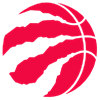Every year it seems like a new ailment spikes in frequency and emerges as the "trendy" injury of the season. After one week of play, the teres major strain is the early favorite for this season's in vogue injury. Last week I detailed the problem after Guardians pitcher Triston McKenzie was diagnosed with a teres major strain in his throwing arm. Now Verlander is also dealing with the injury, though his strain is believed to be a low-grade strain.
As previously discussed, the teres major, is a rotator muscle and serves as a stabilizer of the shoulder. It's crucial in generating velocity and often comes with a lengthy recovery window.
However, the fact that the Mets called the injury a low-grade strain is encouraging, making the injury comparable to the strain sustained by Anthony DeSclafani during the 2020 season. DeSclafani spent the minimal amount of time on the injured list, returning to action in just 10 days.
Verlander appears on a similar track, especially since the Mets have allowed him to continue throwing. He's scheduled to have updated images taken late this week to determine the extent of his healing, and a more concrete timeline should be established then. However, given his injury history, I suspect New York will closely limit his workload for the foreseeable future, putting a cap on his early season fantasy value.
The Atlanta lefty was on track for an Opening Day quality start before straining his left hamstring. The team has
Every year it seems like a new ailment spikes in frequency and emerges as the "trendy" injury of the season. After one week of play, the teres major strain is the early favorite for this season's in vogue injury. Last week I detailed the problem after Guardians pitcher Triston McKenzie was diagnosed with a teres major strain in his throwing arm. Now Verlander is also dealing with the injury, though his strain is believed to be a low-grade strain.
As previously discussed, the teres major, is a rotator muscle and serves as a stabilizer of the shoulder. It's crucial in generating velocity and often comes with a lengthy recovery window.
However, the fact that the Mets called the injury a low-grade strain is encouraging, making the injury comparable to the strain sustained by Anthony DeSclafani during the 2020 season. DeSclafani spent the minimal amount of time on the injured list, returning to action in just 10 days.
Verlander appears on a similar track, especially since the Mets have allowed him to continue throwing. He's scheduled to have updated images taken late this week to determine the extent of his healing, and a more concrete timeline should be established then. However, given his injury history, I suspect New York will closely limit his workload for the foreseeable future, putting a cap on his early season fantasy value.
The Atlanta lefty was on track for an Opening Day quality start before straining his left hamstring. The team has already stated the injury will require a trip to the IL.
Hamstring injuries impact pitchers differently than position players. Hamstring strains that occur while delivering a pitch more commonly involve the "landing leg." However, Fried suffered his hamstring strain while attempting to cover first base. As a result, his trail leg is the affected leg. The hamstring muscle group in the trail leg must absorb high degrees of force to generate velocity and transfer that energy moving forward. Any limitation here can lead to an alteration of normal pitching mechanics and increase the chances of an injury somewhere else in the body.
Fortunately, Fried's injury has been described as mild and he shouldn't be sidelined long. Be patient here as hamstring strains can be fickle, but for now a prolonged absence isn't expected.
The Mariners took a major blow to their starting rotation for the first time in more than a year. Ray suffered a Grade 1 strain of the flexor bundle in his throwing arm in his first start of the year and hit the IL over the weekend. The flexor bundle is closely associated with the ulnar collateral ligament (UCL). Both structures attach to the medial epicondyle of the humerus and act together to provide elbow stability. If one is weakened or loose, the other stabilizer takes on the additional load while making itself susceptible to injury in the process. As a result, the Mariners will approach this situation with the utmost care, even though the strain is apparently mild. Look for him to be out longer than the minimum as he gradually works his way back to throwing at full strength. Chris Flexen is slated to take Ray's place in the Seattle rotation.
Check Swings
Joey Bart: The Giants catchers was placed on the 10-IL Sunday with a back strain. Most back issues are linked to the lumbar or lower back. Bart's injury is being reported as a mid-back or thoracic strain. The thoracic region is unique from the rest of the spine as it also attaches to the rib cage. The list of muscles located here is extensive but does overlap with the muscles of the lower back. Without knowing exactly which muscle is involved, it's hard to make a fair estimate on a possible return date. Fortunately, the strain is being classified as mild, and the team does not anticipate this being a long-term issue. Rookie Blake Sabol served as Bart's replacement Sunday and should remain there for the foreseeable future. Sabol looked good in the spring, hitting three home runs with a .348 average. He is worth consideration, especially in leagues that roster two catchers.
Willson Contreras: The new Cardinals catcher missed just one game after taking a fastball off his right knee. Despite wearing protective equipment, Contreras sustained a knee contusion on the play, but the gear likely helped him avoid a more serious ailment. The injury should heal relatively quickly, though Contreras could receive a game or two off for rest if any associated symptoms like pain and swelling linger.
Bryce Harper: I've received several questions about Harper's status following his offseason Tommy John surgery. All reports regarding his progression through the rehab process have been positive, and the two-time MVP is hoping to take batting practice on the field at Citizens Bank Park at some point this week. Injuries along the roster have allowed Philadelphia to keep Harper off the 60-day IL, but there's no guarantee he doesn't end up there eventually. Still, an early return remains a possibility, and positional players often return significantly sooner than pitchers following a UCL repair. Those invested here did so knowing they were playing the long game and should simply keep Harper stashed until he is ready to return to his expected designated hitter role.
Max Muncy: If a slow start to the season wasn't bad enough, Muncy was forced out of Saturday's game after taking a ground ball to the groin. He was unable to play Sunday but isn't expected to need a stint on the IL. Groin contusions and testicle injuries can be very serious, so it's nice to hear Muncy avoided any significant damage. He may miss another game or two, but look for him to return to action by the end of the week.
Lars Nootbaar: The Cardinals outfielder appears to have a minor thumb sprain after getting the digit stuck on third base. He has been held out of St. Louis' last two outings, though it appears he will avoid the IL for now.
Ryan Pressly: The Astros were without Pressly's services over the week after he reported being "under the weather." The situation is really a non-issue but should serve as a good reminder that illnesses, including COVID-19 and influenza, are still very much real and will impact player health throughout the year ahead. Hopefully Pressly begins feeling better so he can return to his spot in the back-end of the Houston bullpen.
Devin Williams: Williams was yet another player to suffer an injury after being struck by a ball. The Brewers reliever suffered a bruised biceps after he was struck by a comebacker. Most people are familiar with the meaty part of the biceps that is noticeable when you flex your arm. However, they often fail to realize the proximal end of the biceps extends into the shoulder capsule, allowing the joint to play a role in movement at the elbow and the shoulder. Fortunately, Williams' injury is minor, and the decision to hold him out appears precautionary. Look for him to return to his closer role as early as Monday.



































